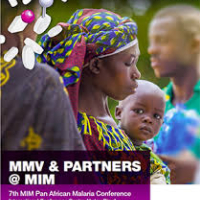
7th MIM Pan African Malaria conference report
Since the turn of the 21st century, progress has been made in reducing the number of malaria cases worldwide. However, the World Health Organization (WHO) World Malaria Report for 2017 reports stagnation in this progress, with some countries showing an increase of malaria compared to the previous year.
From April 16th-20th 2018, Leslie Choi from the Cochrane Infectious Diseases Group (CIDG) editorial base attended the 7th Multilateral Initiative on Malaria (MIM) in Diamniadio, Senegal. The MIM conference brings together hundreds of malaria researchers, from clinicians and policy makers to immunologists and entomologists. Most attendees were researchers from malaria-endemic countries. Therefore, the 7th MIM meeting provided the perfect opportunity to discuss how the community can best tackle the outstanding challenges in malaria control.
The first plenary session kickstarted the event by setting this scene. Dr Pedro Alonso, who leads the WHO Global Malaria Programme, highlighted that most malaria cases occur in a small number of countries. He noted that it is time that global policy reflects the nuances of country-specific settings.
A new tool being proposed for malaria control is primaquine. Leslie presented the findings from the latest update of the Cochrane Review on primaquine for reducing P. falciparum transmission. His presentation also complemented other systematic reviews around the effectiveness and safety of primaquine. There was some fruitful discussion amongst the trialists and policy makers to identify the next steps for improving the evidence base for primaquine.
One key question that was a running theme amongst entomologists was the data requirements for decision-making. Dr Samuel Dadzie and Ms Otubea Ansah Mante Noguchi (Memorial Institute for Medical Research, University of Ghana, Legon ) presented on the efforts by the Ghanaian malaria control programme to collect evidence of insecticide resistance to gain approval for the rollout of piperonyl butoxide (PBO) nets in Ghana. This dataset demonstrates the evidence gaps that entomologists need to fill to address the problem of insecticide resistance.
The outcomes of the conference were promising, setting up many different partnerships. It emphasised the need for collaboration within the community and provides hope for the future of malaria prevention, control, and elimination.
The CIDG editorial base is located at the Liverpool School of Tropical Medicine in Liverpool, UK. The CIDG is led by Professor Paul Garner (Co-ordinating Editor) and Deirdre Walshe (Managing Editor). Over 600 authors from some 52 countries contribute to the preparation of the Cochrane Reviews. They are supported by an international team of Editors, each with topic or methodological expertise.
The CIDG’s main areas of work are on determination of the effects of interventions on the prevention or treatment infectious diseases of relevance to the United Nations Sustainable Development Goals, particularly malaria, tuberculosis, HIV/AIDS, and neglected tropical diseases. The aims of the CIDG are to impact on policy and research in tropical diseases through the production of high quality and relevant systematic reviews, and to lead developments in review quality improvement and effective dissemination of findings.
